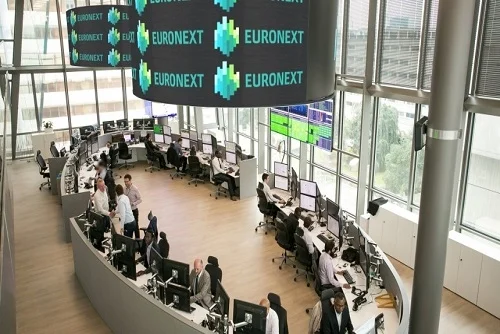ANALYSIS: CME targets growing retail demand for futures, options
10th June, 2025|Radi Khasawneh

CME Group's focus on the growing global retail trading community is the culmination of decades' work, the US group's chief commercial officer has said.
Speaking to FOW, the Chicago-headquartered exchange group’s chief commercial officer sees the recent focus on retail traders as the culmination of a long process developing its offering.
“This is a business that has been evolving for decades at CME Group,” Julie Winkler (pictured) said in an interview. “What we are seeing now is a confluence of factors that have really accelerated growth and the relative importance of retail flow.
“As we came through Covid, and the launch of our micro products across asset classes, the underlying trend is that the sophistication of the average retail trader has dramatically improved over the last five years.”
“There is more demand for the advanced client experience that is now available across retail broker partners, and that these traders are more exposed to through the influx of crypto platforms,” she added. “The ease of use in terms of customer experience, access to data and getting the right size products in their hands has been a game-changer. It is the combination of the right product with diversification across asset classes that has driven us to the fourth quarter of consecutive double digit retail growth.
“It is still accelerating and we are seeing that message being amplified through established retail brokers moving into derivatives or meaningfully expanding their coverage.”
Most recently, US retail giant Robinhood early this year made CME’s futures and options across asset classes available to its US customers.
CME now works with over 130 retail brokers globally and has increased the number of retail traders on the platform to over 500,000 from about 150,000 five years ago.
The group added 83,000 new clients in the first quarter of 2025, up 44% on the same period in 2024, according to figures published in its results presentation.
That included 80% growth in North America and 26% in Europe, the Middle East and Africa as the firm benefitted from adding “new-to-futures” brokers, according to CME.
“We have the benefit of a very diverse product offering,” Winkler said. “So, in this volatile market environment it is even easier for retail brokers to roll-out different opportunities for clients to trade. For example, our micro gold contract was up over 120% in the first half of this year because of attention on the asset class in the wider market.
“When you have a product set that weathers those storms well, that is a great basis for our partners to develop their own offering. A great example is the Asia Pacific, we are seeing far more familiarity with products and risk systems.”
CME’s micro gold future contract traded more than 6 million lots in April, a monthly record, according to FOW data. Volume for the smaller gold contract in the first four months of this year was 14.2 million contracts, 87% higher than the same period last year, according to FOW Data.
“Almost 50% of our retail business is coming from outside the US,” Winkler said. “With the regulatory scrutiny we are seeing in other instruments there is real momentum for futures and options from platforms that had used CFDs, for example. A primary driver behind the consolidation we are seeing in that space is really driven by the need to increase regulatory reach through the acquisition of licenses.”
There has been a string of acquisitions by brokers and crypto firms looking to expand their businesses.
Crypto native exchange Kraken, which in February secured a Markets in Financial Instruments Directive (MiFID) license in the EU through a Cypriot acquisition, in May went live with its service for European Economic Area (EEA) clients. Kraken Derivatives plans to offer perpetual and fixed maturity contracts through its Payward Europe Digital Solutions arm.
Amsterdam-based One Trading in April launched a perpetual futures offering for institutional investors, after securing in July regulatory approval to launch the market. The firm in May extended the service to retail investors in Germany, the Netherlands and Austria.
This is the first in a two-part series, with the second part on technology and education trends in the retail sector published on Tuesday.


